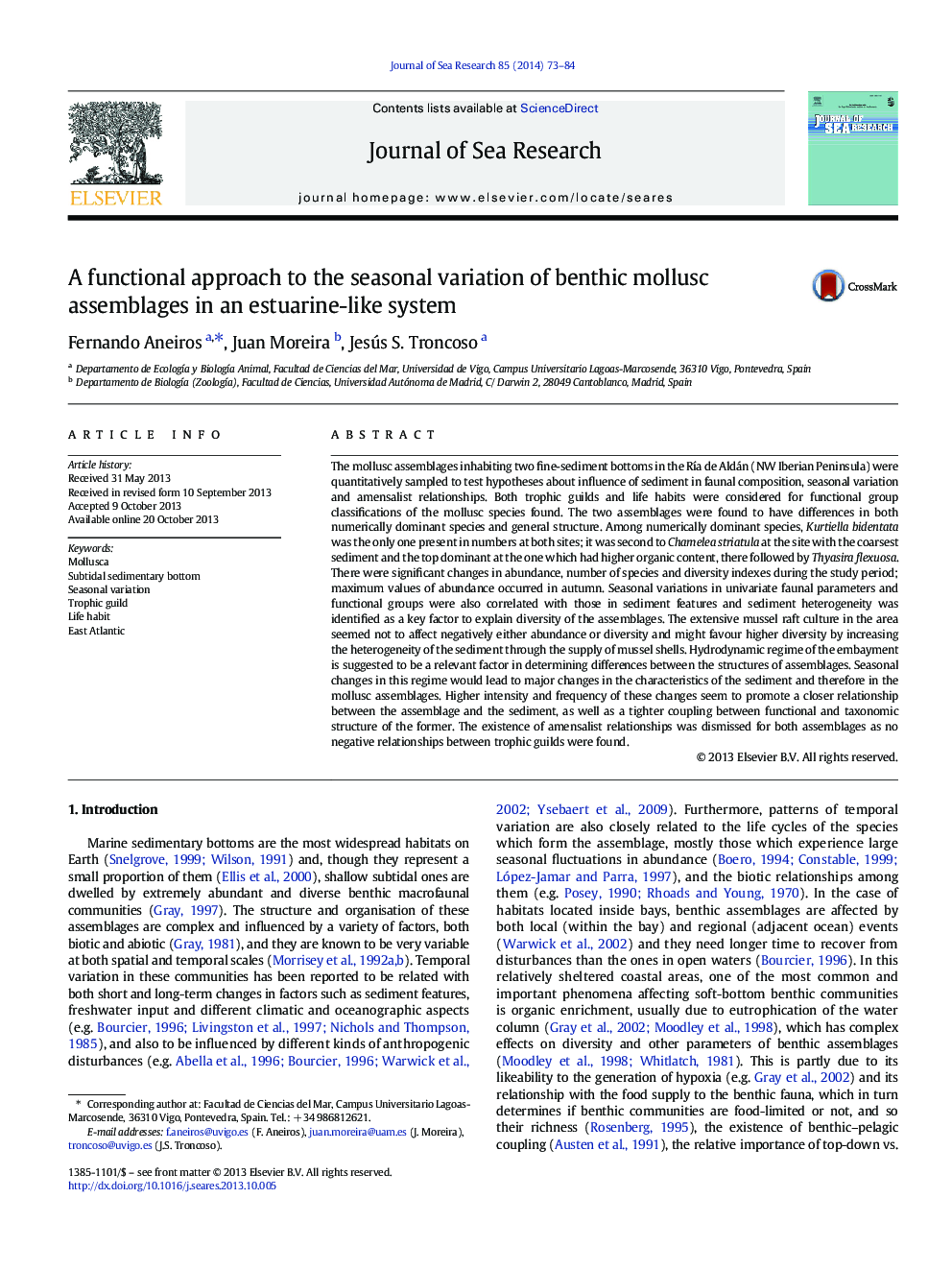| کد مقاله | کد نشریه | سال انتشار | مقاله انگلیسی | نسخه تمام متن |
|---|---|---|---|---|
| 6387359 | 1627489 | 2014 | 12 صفحه PDF | دانلود رایگان |
- Grain size and organic matter content define the differences between the assemblages.
- Maximal abundances were found in autumn, likely due to recruitment and upwelling.
- Heterogeneity of the sediment favours mollusc diversity.
- Hydrodynamism is a key factor defining the structure and changes in the assemblages.
- There were no evidences of negative interactions between deposit and suspension-feeders.
The mollusc assemblages inhabiting two fine-sediment bottoms in the RÃa de Aldán (NW Iberian Peninsula) were quantitatively sampled to test hypotheses about influence of sediment in faunal composition, seasonal variation and amensalist relationships. Both trophic guilds and life habits were considered for functional group classifications of the mollusc species found. The two assemblages were found to have differences in both numerically dominant species and general structure. Among numerically dominant species, Kurtiella bidentata was the only one present in numbers at both sites; it was second to Chamelea striatula at the site with the coarsest sediment and the top dominant at the one which had higher organic content, there followed by Thyasira flexuosa. There were significant changes in abundance, number of species and diversity indexes during the study period; maximum values of abundance occurred in autumn. Seasonal variations in univariate faunal parameters and functional groups were also correlated with those in sediment features and sediment heterogeneity was identified as a key factor to explain diversity of the assemblages. The extensive mussel raft culture in the area seemed not to affect negatively either abundance or diversity and might favour higher diversity by increasing the heterogeneity of the sediment through the supply of mussel shells. Hydrodynamic regime of the embayment is suggested to be a relevant factor in determining differences between the structures of assemblages. Seasonal changes in this regime would lead to major changes in the characteristics of the sediment and therefore in the mollusc assemblages. Higher intensity and frequency of these changes seem to promote a closer relationship between the assemblage and the sediment, as well as a tighter coupling between functional and taxonomic structure of the former. The existence of amensalist relationships was dismissed for both assemblages as no negative relationships between trophic guilds were found.
Journal: Journal of Sea Research - Volume 85, January 2014, Pages 73-84
